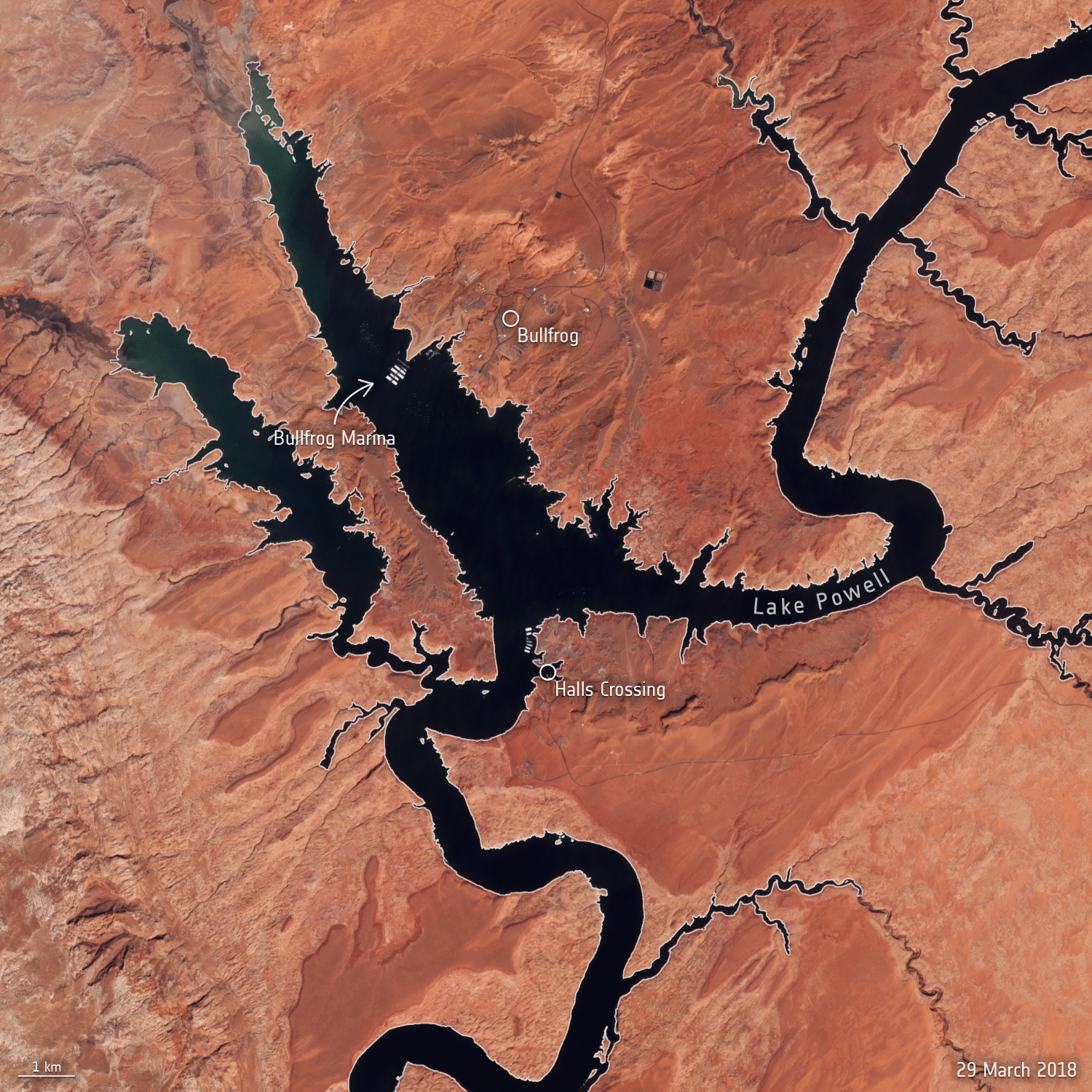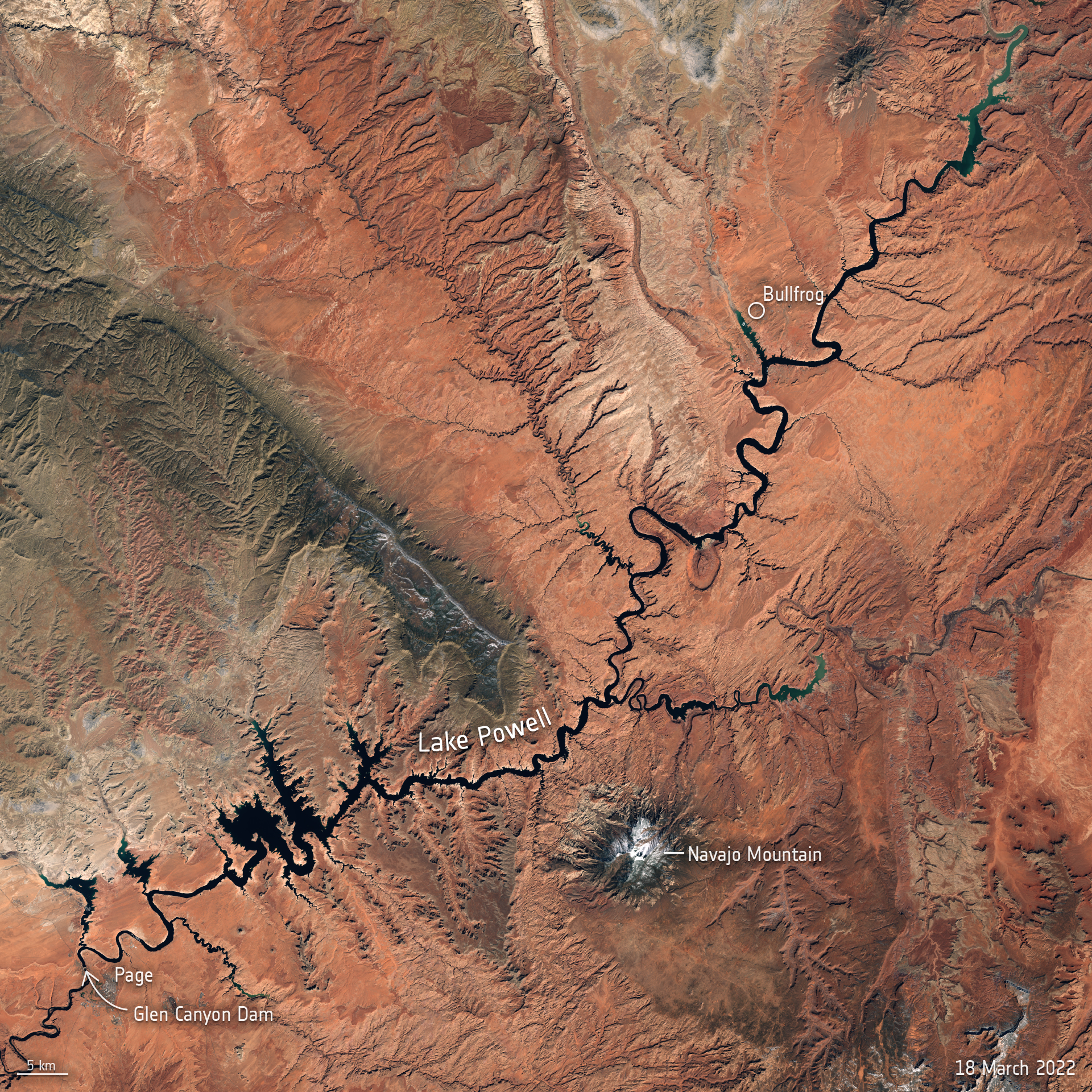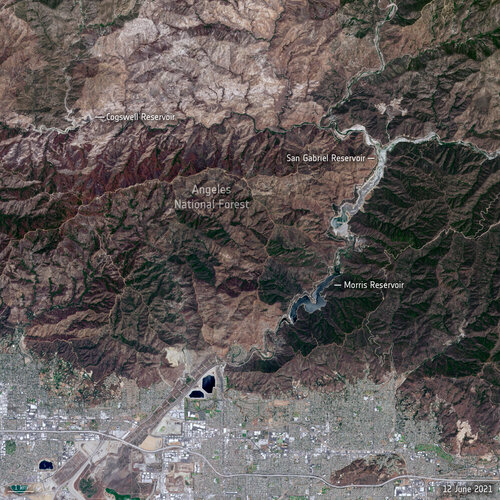Dwindling water levels of Lake Powell seen from space
After decades of drought, water levels in Lake Powell, the second-largest humanmade reservoir in the United States, have shrunk to its lowest level since it was created more than 50 years ago, threatening millions of people who rely on its water supply. Satellite images allow us to take a closer look at the dwindling water levels of the lake amidst the climate crisis.
Straddling the border of southeast Utah and northeast Arizona, Lake Powell is an important reservoir in the Colorado River Basin. The Colorado River, which Lake Powell flows through, was dammed at Glen Canyon in the early 1960s. The lake provides water to approximately 40 million people, irrigates over 2.2 million hectares of land and has the capacity to generate more than 4200 megawatts of hydropower electricity.
In mid-March 2022, Lake Powell’s elevation dropped to an astonishing 1074 m above sea level – the lowest the lake has been since it was filled in 1980. This drastic drop in water levels is documented in natural-colour images captured by the Copernicus Sentinel-2 mission.
The area pictured below shows the surface area changes of the reservoir near Bullfrog Marina, approximately 90 km north from Glen Canyon Dam, between March 2018 and March 2022. Dry conditions and falling water levels are unmistakable in the image captured on 18 March 2022, compared to the 2018 shoreline outlined in the image in yellow.

The drop in water levels comes as hotter temperatures and falling water levels left a smaller amount of water flowing through the Colorado River. The peak inflow to Lake Powell occurs in mid-to-late spring, as the winter snow in the Rocky Mountains melts.
The line graph shows the drastic drop in average water levels in March since 2000, when Lake Powell was at around 1120 m elevation. The current elevation is just a few meters from what is considered the ‘minimum power pool’ – the level at which Glen Canyon Dam is able to generate hydroelectric power. If Lake Powell drops even more, it could soon hit a ‘deadpool’ where water will likely fail to flow through the dam and onto the nearby Lake Mead.
According to a report compiled by the US Geological Survey in cooperation with the Bureau of Reclamation, Lake Powell’s storage capacity has lost nearly 7% of its potential storage capacity from 1963 to 2018, when the diversion tunnels of Glen Canyon Dam closed and the reservoir began to fill.
The capacity of the reservoir is said to be shrinking because of sediments transported by the Colorado and San Juan Rivers. These sediments settle at the bottom of the reservoir and decrease the total amount of water the reservoir can hold.
Climate change is expected to make droughts more severe in the future. According to the National Oceanic and Atmospheric Administration (NOAA) Spring Outlook for the US, nearly 60% of the continental US is experiencing drought.
These conditions are likely to continue across more than half of the continental United States through at least June, straining water supplies and increasing the risk of wildfires. While these conditions are not new, the agency expects them to potentially worsen in the coming months.
Join us at ESA’s Living Planet Symposium in Bonn
Being held on 23–27 May 2022 in Bonn, Germany, ESA’s prestigious Living Planet Symposium offers attendees the unique opportunity to hear first-hand about the most recent developments in the field of Earth observation. Attendees will be able to hear about the latest scientific findings on our planet and how observing Earth from space supports environmental research and action to combat the climate crisis, learn about novel space technologies and about the new opportunities emerging in the rapidly changing sector of Earth observation. This exciting event not only attracts scientists and academics, but also those working in the space industry, institutional stakeholders, data users, students and citizens – an amazing opportunity to all meet in-person after the Covid pandemic.
More information and registration details can be found at the Living Planet Symposium website.







